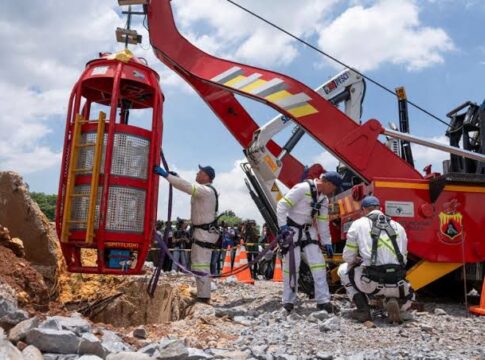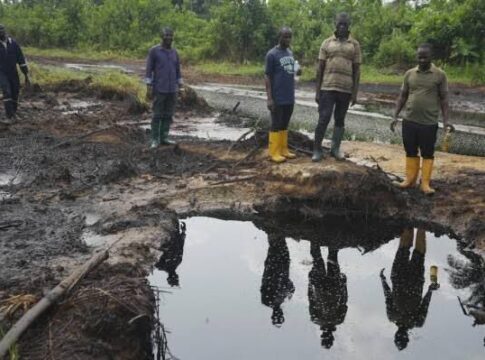Rescuers concluded operations at an illegal gold mine in Stilfontein on Thursday, recovering 78 bodies and rescuing 246 survivors. The police siege, which began in August, has sparked outrage and allegations of state-sponsored violence.
The miners, mostly from Mozambique, Zimbabwe, and Lesotho, were trapped underground for months after police blocked access to food and water. Authorities aimed to force their surrender, part of a nationwide crackdown on illegal mining. Survivors, many emaciated and disoriented, now face charges including illegal immigration and mining.
“This was a state-sponsored massacre,” said GIWASU labor union representative Thandeka Mkhize. “These miners were desperate individuals, not criminals, and this operation dehumanized them.”
A Rescue Filled with Horror
Local volunteers played a critical role in the three-day rescue operation. Mzwandile Mkwayi, 36, who helped recover bodies and survivors, described the ordeal.
“I was scared, but they were happy to see us. We told them, ‘We’re here to help, don’t die,’” Mkwayi said. He recounted placing bodies into bags with his own hands, calling the experience “traumatizing for life.”
A mechanical cage, operated by rescue workers, was used to retrieve people from the mine’s deep, dark tunnels. On Thursday morning, a final descent with a camera confirmed no one was left underground.
“We’ve done all we can, but in such vast tunnels, some bodies might never be found,” said Mannas Fourie, CEO of the rescue company involved.
Illegal Mining’s Cost
South Africa’s illegal mining sector costs the economy over $3 billion annually, according to the Mining Ministry. Abandoned mines like Stilfontein often become hubs for undocumented miners controlled by violent gangs.
READ MORE: CBN Fines Nine Banks N1.35bn for ATM Cash Shortages During Yuletide
Police defended the siege, claiming supplying food or water would “allow criminality to thrive.” However, community leaders and labor unions have condemned the approach, calling it inhumane and avoidable.
“The minister said they’d ‘smoke them out,’ and they did. Congratulations,” said Thembile Botman, a community leader from Khuma, speaking with anger.
Mounting Criticism
Civil society groups argue that the deaths could have been avoided if authorities acted earlier or allowed negotiations to proceed. Police claimed over 1,500 miners had escaped during the siege, but lawyers dispute this, stating exits were repeatedly blocked.
The tragedy has reignited debates over South Africa’s handling of illegal mining, with calls for reforms to address the economic desperation driving people into hazardous conditions.
“This is not just about mining. It’s about poverty, inequality, and a system that criminalizes survival,” Mkhize added.
Looking Ahead
As Stilfontein mourns, the broader implications of the crackdown remain. Families are left grieving, while survivors face legal battles and uncertain futures. The government’s next steps in tackling illegal mining will be closely watched, with many calling for more humane solutions.
“These miners were our brothers,” said Mkwayi. “We live with them. They deserved better.”




